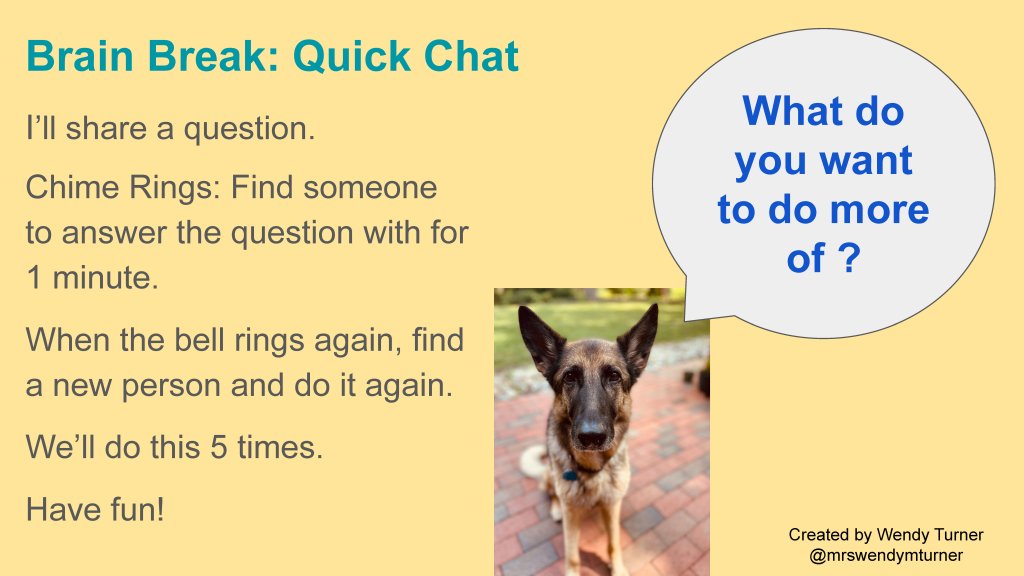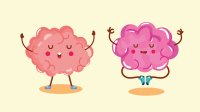4 Brain Breaks for Different Classroom Needs
These brain breaks are designed to serve different purposes, and selecting the right one at the right time can yield positive results.
Your content has been saved!
Go to My Saved Content.The science behind brain breaks is clear. We know that incorporating brain breaks into academic routines yields benefits for students of all ages. CASEL, the Collaborative for Academic, Social, and Emotional Learning, includes brain breaks in their three signature practices. Throughout my career, I have used brain breaks with great success with my second- and third-grade students as well as with college students and adults in professional development workshops.
As I reflect deeply about the brain breaks I use, I categorize them based on the result I hope to achieve with them. Brain breaks can energize students or help them to relax. They can also spark creativity and connection.
4 Targeted Brain Breaks
1. Energizing brain breaks. I use these when I sense that we need to increase energy in the classroom and spark joy. They include activity videos such as those you can find on UJU’s YouTube channel, which was created by a group of teachers. They are fun and require movement. For younger elementary students, movement videos tied to questions and games such as Would You Rather? or Which One? are especially powerful. Videos are also available in Spanish.
For older students and adults, I love to set up a Rock, Paper, Scissors tournament. I have done this with great success with up to several hundred adults. Participants find a partner to play Rock, Paper, Scissors with and then trail the winner, cheering for them until it’s down to just two people in the room. This game is almost universally known and is a crowd pleaser. At professional development sessions, having a small prize for the winner is also fun.
Another brain break I like for all ages is one I call Walk the Room. In this break, I play upbeat music and ask students or adults to walk the room racetrack style while chatting with a friend or contemplating by themselves. I define the path for participants and tell them they can talk about whatever they want, or they can just walk quietly.
Some popular tracks to play are “Ain’t No Mountain High Enough,” by Marvin Gaye and Tammi Terrell; “Happy,” by Pharrell Williams; “Don’t Stop Believin’,” by the Ohio State Marching Band; “ABC,” by the Jackson 5; and “The World Is Ours,” by Aloe Blacc and David Correy.
This type of brain break is useful after morning meetings in classrooms where we typically have been sitting for a while, after lunch when sluggishness can set in, or when we’ve been working on an academic task for 30 minutes or longer and just need to increase energy and clear space in our brains for what’s next.
2. Creative brain breaks. I use these when we have been working hard on a concept and need some time, space, and sensory input to make something on our own. My favorite examples of this type of brain break are creating with small cans of Play-Doh for five minutes, building something with Legos for five minutes, and building structures with small wooden blocks similar to those used to play Jenga.
Students and adults have a choice in what they are making and how it comes together. This small bit of agency can go a long way toward regulation and resetting brains for the rest of the class or day. I also love having students work on a 24-piece puzzle. The task of having to think and work toward an end product activates neurons in the brain. A puzzle can fire up a growth mindset and provide a challenge.
3. Soothing brain breaks. There are times when more mindful, slower-paced brain breaks work best. I offer choices with calm activities when students arrive in the morning, after an energetic or fast-paced activity, and quite simply when we need to calm ourselves to be successful in our next activity.
Examples include journaling, mindful coloring, yoga activities available on YouTube, box breathing, and working on dot-to-dot puzzles with hundreds of numbers. Each requires focus and is relatively quiet. I love to play lo-fi beats music in the background while we work on these things, which adds to a calm ambience in the classroom and helps students regulate while they can see how much time they have. Three to five minutes works very well. The Pomodoro Music Timer YouTube channel has lots of videos you can use for this purpose.
4. Connection brain breaks. A connected and safe classroom community supports academic and social success. Throughout the year, we can build connections through rituals and activities where we share ourselves with others. This can include articulating our hopes and dreams, fears, goals, and what’s important to us. We can share our customs, traditions, and family practices.
Brain breaks that focus on these goals can provide that time. A very popular brain break is to ask a quick opinion question, such as “What’s better, tacos or pizza, and why?” Would You Rather? and Four Corners are always great options.
I love to do a quick-chat brain break in my classroom. We do this each day after lunch to move and foster connection. I put up a slide with a quick question, and students find a partner to chat with for one minute. When I ring the chime, they find a new partner and do the same. We do this for five rounds. It gets us moving, talking, and connecting and takes just five minutes. It’s a perfect transition between activities. You can see one of my slides below. I put a picture of my dog Bella in it for fun.

Brain breaks are a necessary and enjoyable element of any learning environment. They work best when we plan them to meet our learners’ needs at different times of day and in different situations. When we are flexible and attuned to our students, we can take advantage of the best type of brain break for the moment.
